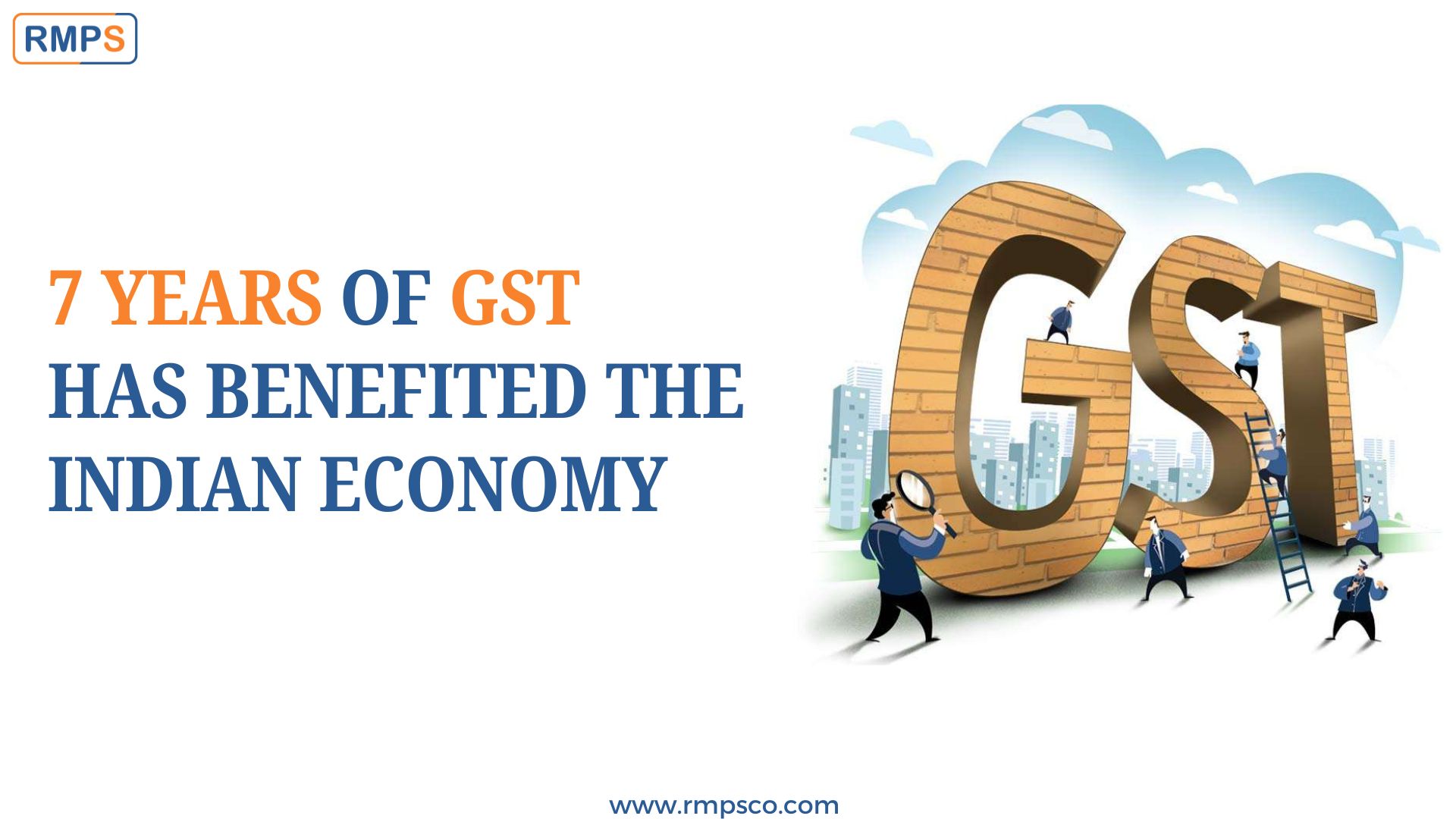
Since its implementation, GST has undergone several phases of evolution, facing both achievements and challenges. Here is a detailed analysis of the 7 years of GST in India.
Year 1: Implementation and Initial Challenges (2017-2018)
Achievements:
- Launch and Rollout: GST was launched with the aim of subsuming multiple indirect taxes and creating a single market. It was designed to replace a plethora of central and state taxes.
- Increased Compliance: The initial year saw an increase in tax registration, with many businesses entering the formal economy.
Challenges:
- Technological Hiccups: The GST Network (GSTN), the IT backbone of GST, faced significant technical challenges, causing delays in filing and compliance.
- Complexity and Confusion: Businesses struggled with understanding the new system, multiple tax rates, and frequent changes in rules and procedures.
Year 2: Stabilization and Adjustments (2018-2019)
Achievements:
- Simplification Measures: The government took steps to simplify GST by reducing the number of tax slabs and easing the compliance burden for small businesses through schemes like the Composition Scheme.
- Increased Revenue: GST collections started stabilizing, reflecting improved compliance.
Challenges:
- Refund Delays: Exporters faced delays in receiving GST refunds, impacting their cash flow.
- Rate Rationalization Issues: Frequent changes in tax rates created uncertainty and compliance challenges for businesses.
Year 3: Enhancements and Rationalization (2019-2020)
Achievements:
- Rate Reductions: The GST Council continued rationalizing rates, making several essential items more affordable.
- Improved Compliance Mechanisms: Introduction of e-invoicing for businesses above a certain turnover threshold aimed at reducing tax evasion.
Challenges:
- Economic Slowdown: The overall economic slowdown affected GST collections.
- Complexity in Returns: The process of filing returns remained complex, with ongoing changes adding to the compliance burden.
Year 4: Impact of COVID-19 (2020-2021)
Achievements:
- Relief Measures: The government introduced several relief measures, including extending return filing deadlines and providing liquidity support to businesses.
- Digital Push: The pandemic accelerated digital adoption, with businesses increasingly using online platforms for compliance.
Challenges:
- Revenue Shortfall: The economic impact of COVID-19 led to a significant drop in GST collections.
- Compliance Issues: The pandemic-induced disruptions caused difficulties in compliance for many businesses.
Year 5: Recovery and Reforms (2021-2022)
Achievements:
- Recovery in Collections: With the economy recovering, GST collections witnessed a rebound, reaching pre-pandemic levels.
- Simplified Returns: The introduction of simplified return forms (RET-1/2/3) aimed at easing compliance.
Challenges:
- Structural Issues: Issues like the inverted duty structure and the need for further rate rationalization persisted.
- Tax Disputes: Increased number of disputes related to GST assessments and refunds.
Year 6: Strengthening the System (2022-2023)
Achievements:
- Technological Upgrades: The GSTN infrastructure saw significant upgrades, improving the stability and user experience of the portal.
- GST Audit: Introduction of a more robust audit framework to ensure better compliance and reduce evasion.
Challenges:
- Complexity for Small Businesses: Despite simplification efforts, small businesses continued to face challenges in understanding and complying with GST rules.
- Litigation: Rising litigation cases due to differing interpretations of GST law.
Year 7: Future Prospects and Continued Evolution (2023-2024)
Achievements:
- E-Invoicing Expansion: Extension of e-invoicing to smaller businesses improved transparency and compliance.
- Enhanced Revenue Collections: Consistently high GST collections reflecting a broadening tax base and better compliance.
Challenges:
- Policy Coherence: The need for more coherent and stable policy measures to reduce the compliance burden and improve ease of doing business.
- Continued Rationalization: Ongoing need for rate rationalization and addressing issues like the inverted duty structure.
Key Impacts and Learnings
Economic Integration: GST has successfully integrated the Indian market, removing inter-state barriers to trade and creating a unified economic space. This integration has facilitated easier movement of goods and services, boosting efficiency and productivity.
Formalization of Economy: A significant number of businesses have entered the formal economy due to GST, improving transparency and compliance. This formalization has broadened the tax base and increased revenue collections.
Revenue Trends: GST collections have shown an overall upward trend, reflecting increased compliance and economic recovery. The government’s efforts to plug revenue leakages and enhance the GSTN infrastructure have contributed to this growth.
Compliance and Technology: Technological advancements have played a crucial role in GST implementation. The introduction of e-invoicing, digital return filing, and real-time tracking of transactions have improved compliance and reduced evasion.
Rate Rationalization: Ongoing rate rationalization efforts aim to simplify the tax structure and reduce the burden on businesses. However, the frequent changes in rates and rules have also created challenges, necessitating a more stable and predictable policy environment.
Way Forward
Simplification of Compliance: Further simplification of the GST compliance process, especially for small and medium enterprises (SMEs), will enhance ease of doing business. Simplified return filing and reduced paperwork can significantly benefit businesses.
Continued Technological Upgrades: Investing in technology to further strengthen the GSTN infrastructure will improve user experience and compliance. Enhanced data analytics can help in better tracking of transactions and identifying non-compliance.
Addressing Structural Issues: Addressing issues like the inverted duty structure and ensuring coherent policy measures will enhance the effectiveness of GST. A stable and predictable tax regime will boost business confidence and investment.
Enhancing Dispute Resolution Mechanisms: Improving dispute resolution mechanisms to handle GST-related disputes efficiently will reduce litigation and improve compliance. A transparent and fair resolution process will build trust among taxpayers.
Fostering Cooperative Federalism: Strengthening the cooperative federalism approach in GST decision-making will ensure that the concerns
LinkedIn Link : RMPS Profile
This article is only a knowledge-sharing initiative and is based on the Relevant Provisions as applicable and as per the information existing at the time of the preparation. In no event, RMPS & Co. or the Author or any other persons be liable for any direct and indirect result from this Article or any inadvertent omission of the provisions, update, etc if any.
Published on: July 3, 2024
